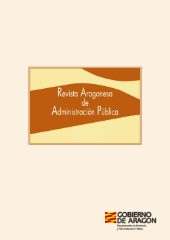An overview of artificial intelligence systems from the perspective of administrative law
DOI:
https://doi.org/10.71296/raap.120Keywords:
artificial intelligence, administrative law, european law, machine learning, artificial intelligence systemsAbstract
The purpose of this paper is to facilitate the comprehension of basic concepts of artificial intelligence regulation for those approaching the field for the first time. Notwithstanding there are numerous publications on artificial intelligence in the field of law, most of them are either addressed to a public that already has prior knowledge of the sector or, if they are intended to a ignorant audience, they do not deal with the subject from a legal perspective. Consequently, the paper is introductory in nature and aims to provide the reader with an overview of the fundamental concepts and problems of this technology in a straightforward and didactic language.
Downloads
References
Álvarez García, Vicente (2010): Industria. Madrid: Iustel.
Álvarez García, Vicente (2020): Las normas técnicas armonizadas (Una peculiar fuente del Derecho europeo). Madrid: Iustel, 267 pp.
Álvarez García, Vicente; Tahirí Moreno, Jesús (2023): «La regulación de la inteligencia artificial en Europa a través de la técnica armonizadora del nuevo enfoque». Revista General de Derecho Administrativo, 63.
Boix Palop, Andrés; Soriano Arnanz, Alba (2023): «Transparencia y control del uso de la inteligencia artificial por las administraciones públicas». En Derecho Público de la Inteligencia Artificial. Zaragoza: Fundación Manuel Giménez Abad, pp. 247-283.
Bommasani, Rishi, et al. (2021): «On the opportunities and risks of foundation models». Stanford: University of Stanford. arXiv preprint, arXiv:2108.07258.
Bommasani, Rishi, et al. (2023): «Do Foundation Model Providers Comply with the Draft EU AI Act». Stanford: Stanford Center for Research on Foundation Models.
Cerrillo Martínez, Agustí (2023): «Lección 21. Actuación automatizada, robotizada e inteligente». Revista de Derecho Público: Teoría y método, pp. 525-541. DOI: https://doi.org/10.37417/ManDerAdm/L21
Cotino Hueso, Lorenzo (2020): «SyRI, ¿a quién sanciono? Garantías frente al uso de inteligencia artificial y decisiones automatizadas en el sector público y la sentencia holandesa de febrero de 2020». La Ley Privacidad, 4.
Cotino Hueso, Lorenzo (2023): «Los usos de la inteligencia artificial en el sector público, su variable impacto y categorización jurídica». Revista Canaria De Administración Pública, 1, pp. 21-242.
Gamero Casado, Eduardo (2023): «Sistemas automatizados de toma de decisiones en el Derecho Administrativo Español». Revista General de Derecho Administrativo, 63.
Gamero Casado, Eduardo, et al. (2023): Inteligencia artificial y sector público. Retos, límites y medios. Valencia: Tirant lo Blanch.
González Cabañes, Francisco; Díaz Díaz, Norberto (2023): «Capítulo I. ¿Qué es la Inteligencia Artificial?». En Gamero Casado, Eduardo (dir.), et al. Inteligencia artificial y sector público. Retos, límites y medios. Valencia: Tirant lo Blanch, pp. 37-72.
Lorenz, Philippe, et al. (2023): «Initial policy considerations for generative artificial intelligence». OECD Artificial Intelligence Papers, 1. París: OECD Publishing.
Mir Puigpelat, Oriol (2023): «La automatización y el uso de algoritmos e inteligencia artificial en derecho administrativo comparado». Revista General de Derecho Administrativo, 63.
Ponce Solé, Juli (2022): «Reserva de humanidad y supervisión humana de la inteligencia artificial». El Cronista del Estado Social y Democrático de Derecho, 100, pp. 58-67.
Ponce Solé, Juli (2022): «Las relaciones entre inteligencia artificial, regulación y ética, con especial atención al sector público». Revista General de Derecho Administrativo, 61.
Presno Linera, Miguel Ángel (2022): Derechos fundamentales e inteligencia artificial. Madrid: Marcial Pons. DOI: https://doi.org/10.2307/jj.4908196
Quijano Sánchez, Lara, et al. (2018): «Applying automatic text-based detection of deceptive language to police reports: Extracting behavioral patterns from a multi-step classification model to understand how we lie to the police». Knowledge-Based Systems, 149, pp. 155-168. DOI: https://doi.org/10.1016/j.knosys.2018.03.010
Rivero Ortega, Ricardo (2023): «Algoritmos, inteligencia artificial y policía predictiva del Estado vigilante». Revista General de Derecho Administrativo, 62.
Soriano Arnanz, Alba (2021): «Decisiones automatizadas: problemas y soluciones jurídicas. Más allá de la protección de datos». Revista de Derecho Público: Teoría y Método, 3, pp. 85-127. DOI: https://doi.org/10.37417/RPD/vol_3_2021_535
Tahirí Moreno, Jesús A. (2023): «El principio de presunción de falibilidad de las decisiones algorítmicas desfavorables: Una nueva garantía jurídica frente a las decisiones automatizadas y el uso de sistemas de inteligencia artificial en la Administración Pública». En RevistaTA, 60, pp. 188-214. DOI: https://doi.org/10.71296/raap.9
Velasco Rico, Clara Isabel (2020): «Personalización, proactividad e inteligencia artificial. ¿Un nuevo paradigma para la prestación electrónica de servicios públicos?». Revista de Internet, Derecho y Política (IDP), 30. DOI: https://doi.org/10.7238/idp.v0i30.3226






